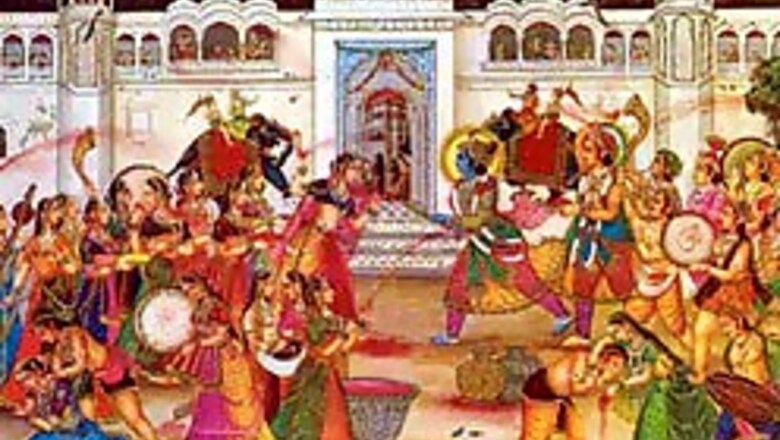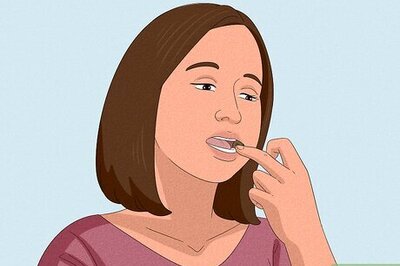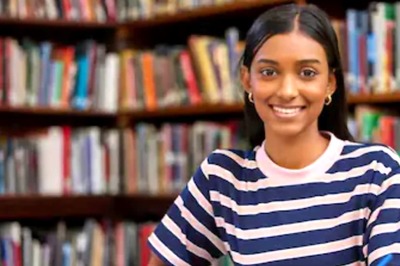
views
India is a land of such bewildering diversity that every festival assumes a new form and a unique colour. Smeared in the varied hues of diversity is Holi – the festival of colours – celebrated during spring (February-March).

In Hindu mythology, young Prahlad survives a test by fire even as her evil aunt Holika, considered immune to fire, is reduced to ashes. The festival of Holi celebrates this victory of good over evil, marked by playing with colours and lighting bonfires.
However, across India Holi takes on as many hues as the colours used in the festival. While, in parts of Haryana, Maharashtra and Gujarat it's a casual contest among youths, in Mathura it gets playfully violent. And in a state in the far East, Holi lasts for six days.
People form groups and visit each others' places, organise colourfully-wet Holi parties and binge on unlimited helpings of thandai, bhaang and sweets.
Here are some snapshots:
PAGE_BREAK
Festival of fertility: People in Borvav village of Gujarat celebrate Holi as a festival of human fertility. They perform a unique ritual which they believe would bless childless couples with progeny.
They make a childless man ride a donkey around the village so that he is blessed with children. Sounds
Sounds weird? Here’s the weirder bit. The villagers, after selecting the man, smear his face with black colour, tear his clothes and garland him with shoes, and pack him off to a detour of the village.
Matki: In parts of Haryana, Maharashtra and Gujarat, Holi assumes the nature of a friendly youth contest. It’s more like a show of strength between boys and girls. A pot of milk/buttermilk is hung high on the streets and young boys try to reach it and break it by making human pyramids while the girls try to stop them by throwing colored water on them.
The boy who finally manages to break the pot is crowned the Holi King of the Year for that community.
Latthmar: In some places like Mathura, Holi assumes a playfully violent nature. In joint Hindu families, women beat their brothers-in-law with her sari rolled up into a rope to depict mock rage for having attempted to drench them in colour. This reflects the subtle, playful bond shared by a daughter-in-law with her husband’s brothers.
PAGE_BREAK
Dol Yatra: Bengalis celebrate Holi as Dol Yatra or the swing festival where the idols of Krishna and Radha are placed on swings and women sing devotional songs, throw gulal on them and take turns to swing them.
The people of Orissa celebrate Holi in a similar manner but here the idols of Jagannath, the deity of the Jagannath Temple of Puri, replace the idols of Krishna and Radha.
Yaosang: Holi in Manipur lasts for six days. Introduced in the eighteenth century with Vaishnavism – the Vishnu worshipping cult, it soon merged with the centuries-old festival of Yaosang.
Young men and women perform a group folk dance 'thaabal chongba' on the full moon night. However, this moonlight party has now assumed newer avatars and the traditional earthen lamps have been replaced by fluorescent lamps.
Boys have to pay money to the girls for playing 'gulal' with them. Devotees sing songs, dance and play 'gulal' wearing traditional white and yellow turbans.
On the last day of the festival, large processions are taken out to the main Krishna temple near Imphal.


















Comments
0 comment